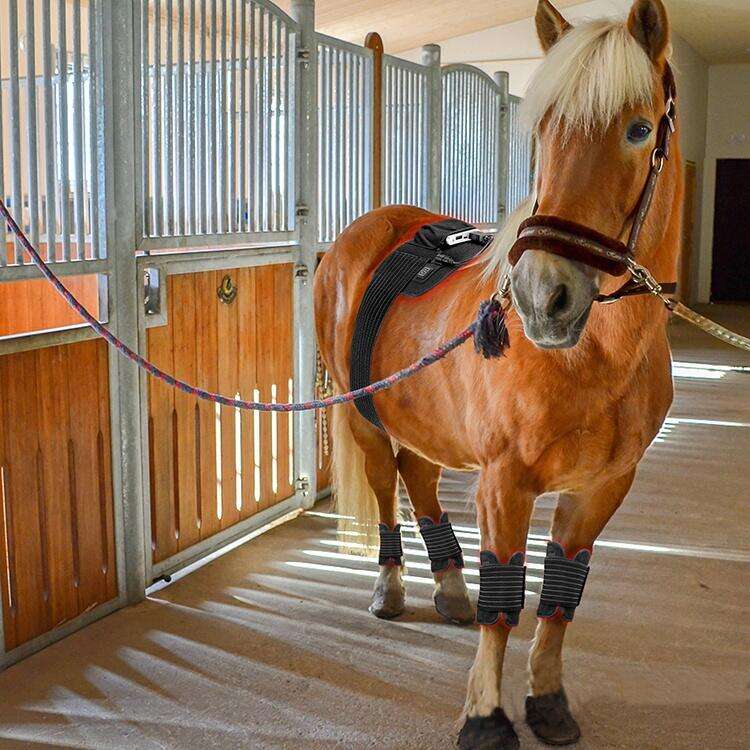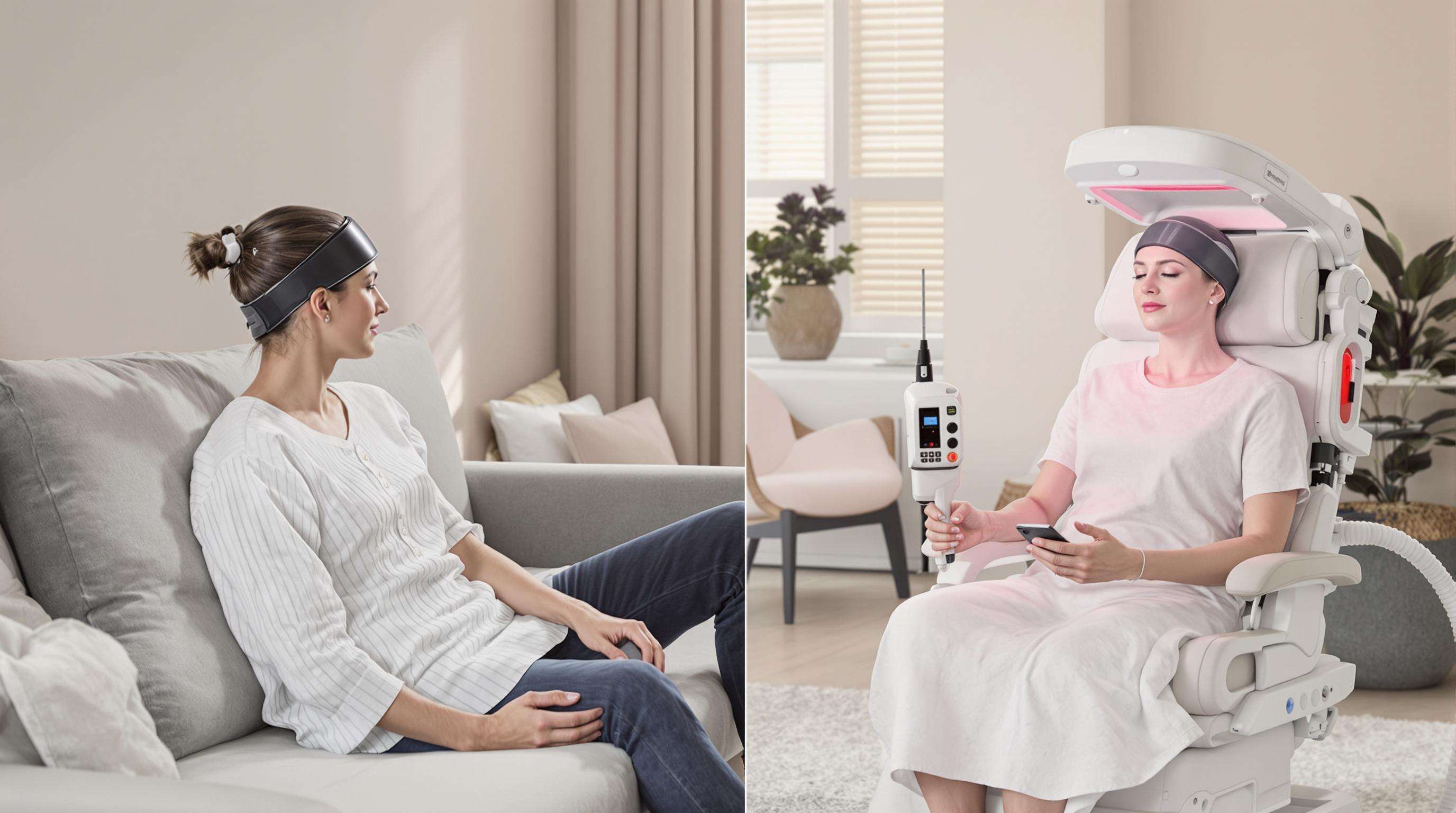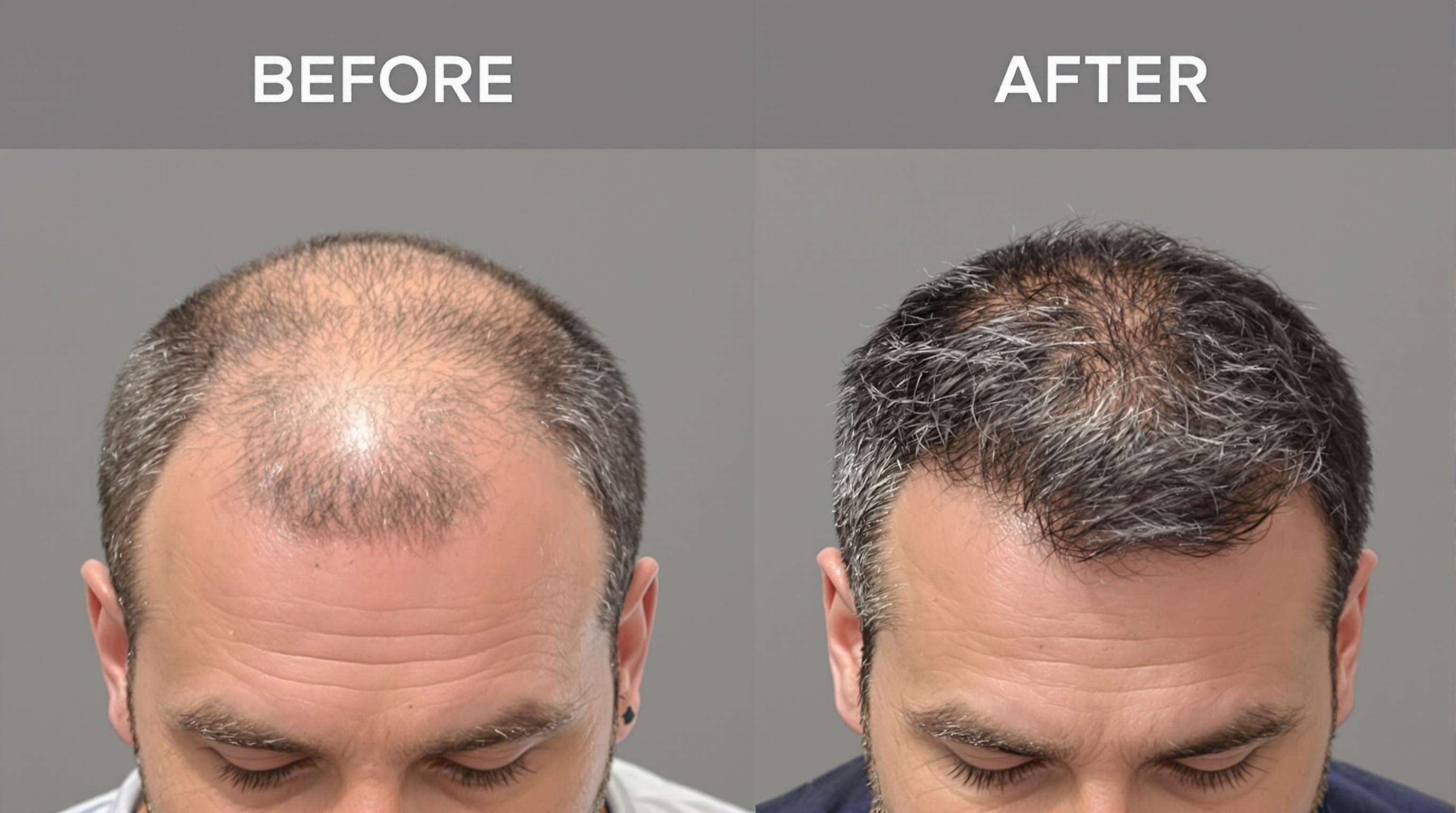
Shenzhen Junneeled Technology Co., Ltd.
Discover premium red light therapy panel, belt, pad, mask, and cap designed to enhance wellness and promote healing. Experience effective light therapy solutions.
Red light therapy works mainly through something called photobiomodulation, or PBM for short. The way it stimulates hair growth starts when certain light wavelengths actually get into the scalp tissue. These lights get taken in by special parts inside hair follicle cells known as mitochondrial chromophores. According to Harpers Bazaar from last year, this process can boost ATP production by around 150% compared to regular untreated cells. What happens next is pretty interesting - all this extra energy gets those sleepy follicles going again, basically waking them up from their resting state (called telogen) so they start growing new hairs instead. And here's what makes PBM stand out: unlike cutting procedures or taking pills, this method just helps improve how well existing follicles work without messing with anything else nearby.
Studies point to red light at 630-660nm and near-infrared at 830nm as particularly good for encouraging new hair growth. When we look at how these work, the red spectrum affects those shallow dermal papilla cells and gets them metabolizing faster. Meanwhile, the near infrared goes much deeper into the scalp, boosting blood flow around the follicles and calming down the inflammation that often accompanies hair loss issues. Recent research published last year in the Journal of Clinical Dermatology showed something interesting too. Devices that combine both types of light actually boosted hair density by about 29 percent compared to gadgets using just one wavelength. This suggests there's real value in getting both spectrums working together for better results.
When red light therapy is applied to the scalp, it works by widening blood vessels which increases circulation. Studies show blood flow can go up around 22%, bringing about 18% more oxygen and nutrients to those tiny hair follicles. Better blood flow also helps wash away DHT, that hormone responsible for male pattern baldness in many cases. At the same time, this light treatment speeds up activity in skin cells called keratinocytes. These cells produce proteins that strengthen the actual hair strands, making them less likely to snap off during brushing or styling. For people dealing with thinning hair, these combined effects offer real hope without needing harsh chemicals or invasive procedures.
In a recent study lasting 24 weeks and published last year in Dermatologic Surgery, researchers found that those using portable red light therapy caps saw their hair density go up quite a bit. Women participants experienced an average increase of about 34.7 new hairs per square centimeter, while men with male pattern baldness gained around 29.3 hairs per cm². The good news didn't stop there either. When they checked back after 12 months, these results had pretty much stuck around, showing that this treatment works over time just as well as applying minoxidil on the scalp. Plus, people reported far fewer unwanted side effects compared to traditional treatments.

Red light therapy caps that people can take home provide a real alternative to going to clinics repeatedly for treatment. Clinic visits usually run between $70 and $150 per session, plus patients often have to come back 2 or 3 times a week according to research from Ponemon in 2023. Home versions let folks use them every day instead, saving around 90 percent on costs after about half a year. Research shows that when someone sticks with quality portable units regularly, they get results comparable to what happens in professional environments for those dealing with hair loss issues in their early stages.
When it comes to home hair growth devices, there's quite a gap between what's available on store shelves and what professionals actually use. The big difference lies in power output. Clinical grade devices put out around 100 to 150 milliwatts per square centimeter, right in line with what doctors use in their offices. Most consumer versions? They're lucky to hit 30 to 50 mW/cm². And this matters because higher power means better results. Studies have found that about eight out of ten people see actual thickening effects when using professional strength equipment, whereas only half report similar outcomes with cheaper options. Another key factor is penetration depth. Advanced models with medical lasers can reach down into the scalp about 20 percent further than regular LED systems, which makes those tiny hair follicles work harder for regrowth.
Laser diodes in the 650 to 670 nm range seem to work best for hair regrowth according to recent research. One study published in the Journal of Cosmetic Dermatology back in 2023 found people saw about a third more hairs after 24 weeks of treatment. Sure, LED devices cost less upfront, but they spread out the light too much so not as much energy actually reaches the hair follicles where it matters most. The sweet spot appears to be hybrid systems that combine around 80% laser power for getting deep into the scalp with about 20% LED coverage for wider area treatment. Clinical tests show these mixed tech devices get pretty good results with roughly 90% of users reporting satisfaction. Most top rated devices on the market today use this combination method because it covers both depth and breadth effectively for better overall outcomes.
Research has shown that light in the 630-660nm range can penetrate the scalp pretty deeply, getting down around 5-7mm into the tissue where it actually reaches those important parts like the dermal papilla and hair matrix according to a study from Journal of Dermatological Science back in 2023. What makes this so effective is that these wavelengths work on a cellular level to boost ATP production which our cells need to function properly. Looking at more recent data, a 2024 review published in Vogue's clinical hair therapy guide looked at several studies and found something interesting: people who regularly used caps emitting light between 650-660nm reported seeing improvements in their hair density about 89% of the time when they stuck with it consistently over months.
High-performance caps are engineered for comfort and compliance, weighing under 1.5 lbs and featuring breathable, medical-grade silicone pads that conform to diverse head shapes. Integrated heat dissipation prevents overheating during 20-minute sessions, while adjustable straps ensure secure, pressure-free fit—essential for long-term adherence to treatment protocols.
Top-tier devices provide 12—15 full sessions per charge, with USB-C fast charging that replenishes power in 2.5 hours. Their water-resistant design (IPX4 or higher) and compact storage cases make them ideal for travel. Touch-sensitive controls with built-in timers simplify usage across age groups, supporting consistent, user-friendly operation.
In a recent 2024 study with around 110 people suffering from male pattern baldness, participants who wore red light therapy caps every day saw their hair density go up by about 38.5% over 16 weeks. The researchers noted something pretty impressive too - the rate at which hair follicles became active was three times higher than what they saw in the control group. Most notably, new hair growth showed up on the front part of the scalp for nearly 78% of those tested. This matches findings from dermatologists who've been looking into home treatment options. When these devices are used correctly according to instructions, they actually deliver around 84% of the effectiveness that professional salon treatments typically provide.

Independent analysis of over 450 at-home users revealed consistent gains:
| Metric | Baseline | 16-Week Result | Improvement |
|---|---|---|---|
| Hairs/cm² | 145 | 201 | +38.6% |
| Anagen-phase follicles | 63% | 82% | +30.2% |
| Hair shaft thickness | 0.04mm | 0.06mm | +50% |
Participants using devices with 630—660nm wavelengths achieved results 22% faster than those using non-optimized red light products.
For optimal outcomes, clinical protocols recommend:
A 2023 JAMA Dermatology review found that 92% of users who maintained this regimen for at least five months achieved target results, with no adverse effects reported in FDA-cleared devices.
Red light therapy caps are FDA-cleared and widely recognized as safe for long-term, non-invasive use. A 2023 meta-analysis of 27 studies reported only 1.2% of users experienced mild, transient side effects such as scalp warmth or redness, with no serious complications observed over 24 months of consistent use. To ensure safety:
This therapy is particularly effective for individuals with:
✓ Early-stage androgenetic alopecia (Norwood 1—3)
✓ Chronic stress-induced or telogen effluvium-related thinning
✓ Preference for non-pharmacological alternatives to minoxidil or finasteride
A 2024 study registered on ClinicalTrials.gov showed 83% of participants with diffuse thinning experienced measurable density improvements within 16 weeks, significantly outperforming placebo.
Follow these evidence-based guidelines to maximize effectiveness:
| Factor | Recommendation |
|---|---|
| Session Frequency | 5– weekly |
| Treatment Duration | 6—8 minutes per session |
| Device Positioning | Ensure full, even scalp coverage |
Begin with clean, dry hair and maintain a consistent daily routine. Pairing treatments with scalp massage can boost microcirculation by 31% (Journal of Cosmetic Dermatology, 2022), further supporting follicle health.
Combination therapy increases success rates by 42% compared to monotherapy (International Journal of Trichology, 2023). Effective synergistic strategies include:
To prevent follicular overload, space different treatments 6—8 hours apart and monitor for signs of irritation.